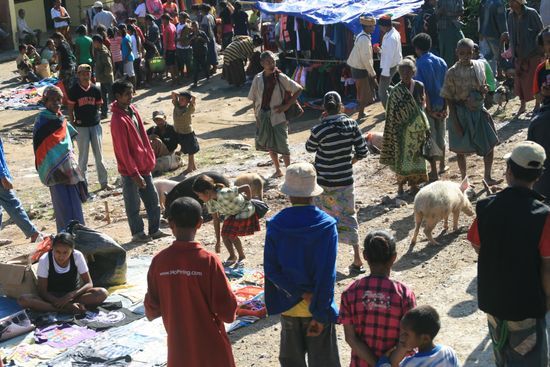
Superficial fungal infections are some of the most prevalent diseases across the world. This course explores the epidemiology, clinical presentation, diagnosis, and management of the most common superficial fungal infections globally. This course also talks about the rapid spread of drug-resistant dermatophytes and how to mitigate its effects.
Photo credit: WHO / Joao Soares Gusmao
Language: English
NTD
Course information
Overview: Superficial fungal infections, also known as dermatomycoses, are common infections that estimated to affect around 1 billion people worldwide. These infections most frequently affect the skin, hair, and nails of humans. They are caused by 3 main groups of fungi: dermatophytes, non-dermatophyte mold, and yeasts.
In most cases, the diagnosis can be found-based on clinical characteristics. Mycological examination may be necessary for a few cases before starting antifungal treatment. This course will explore the clinical features and diagnostic tools to help distinguish dermatomycoses from similar-appearing diseases. This course will also explore the standard treatment regimen for superficial fungal infections.
Lastly, we will discuss the rapidly emerging problem of antifungal resistance in dermatophytes and what can be done to mitigate its effects.
Course duration: Approximately 3.5 hours.
Certificates: A Certificate of Achievement will be issued to participants who score at least 80% of the total points available in the final assessment. Participants who receive a certificate of achievement can also download an Open Badge for this course. Click here to learn how.
What you'll learn
- Name the most common pathogens responsible for superficial fungal infections.
- Describe the epidemiology and pathology of superficial fungal infections.
- Describe the clinical presentation and diagnosis of superficial fungal infections.
- Explain the therapeutic management plan for superficial fungal infections.
- Explain the importance of drug-resistance dermatophytes and how to mitigate its effects.
Course contents
Module 1: Introduction into Neglected Tropical Diseases; General Overview, Classification, and Epidemiology of Superficial Fungal Infections:
This module starts with an overview of neglected tropical diseases since superficial fungal infections are often co-endemic with many cutaneous NTDs. It provides a general overview of the dermatomycoses, a brief discussion on the epidemiology of these diseases, and a classification of these diseases. At the end of this module, you will define dermatomycosis; identify the prevalence of this disease; and list the classification of superficial mycoses.Module 2: Tinea capitis, Tinea corporis, and Tinea cruris:
At the end of this module, you will explain the demographics, clinical presentations, and differential diagnoses of tinea capitis, tinea corporis, and tinea cruris.Module 3: Tinea manuum and Tinea pedis; Diagnostic Mycological Examination and Treatment of Tineas; Onychomycoses:
At the end of this module, you will explain the demographics, clinical presentations, and differential diagnoses of tinea manuum and tinea pedis; outline the different diagnostic approaches to mycological examinations as well as various treatment plans for localized tinea infections; describe the demographics, clinical presentation, diagnostic approaches, and treatment plans for onychomycoses.Module 4: Pityriasis Versicolor; Mucocutaneous Candidiasis:
At the end of this module, you will describe the demographics, clinical presentation, diagnostic approaches, and treatment plans for pityriasis versicolor and mucocutaneous candidiasisModule 5: Drug-Resistant Dermatophytes:
At the end of this module, you will recall the definitions, associated factors, and epidemiology of dermatophytes; describe the clinical features, diagnostic approaches, management, treatment, and mitigation of dermatophyte resistance.
Enroll me for this course
Certificate Requirements
- Gain a Record of Achievement by earning at least 80% of the maximum number of points from all graded assignments.